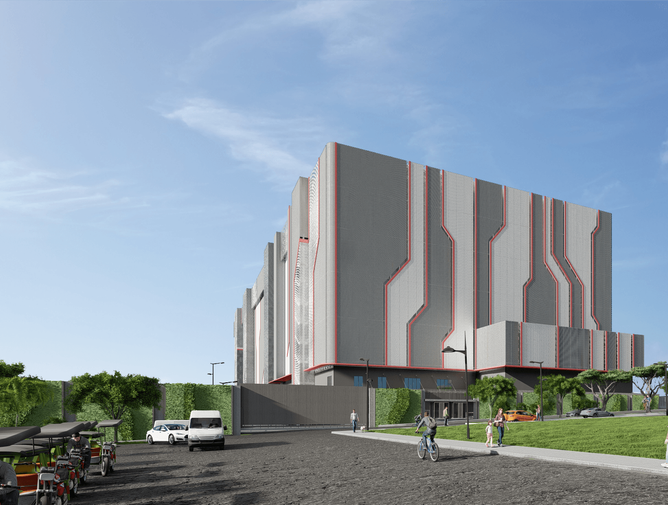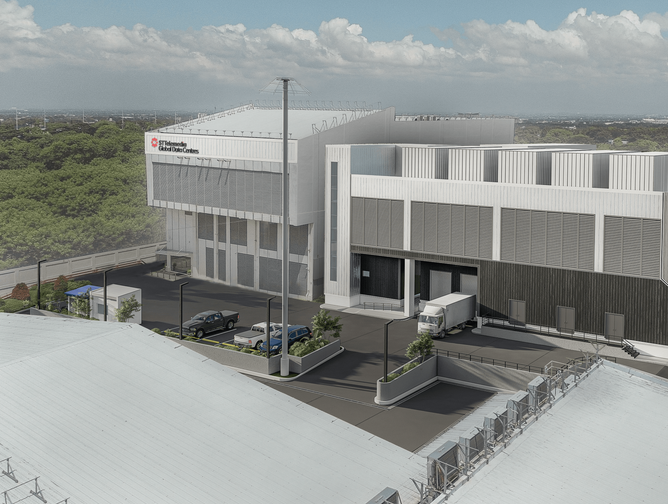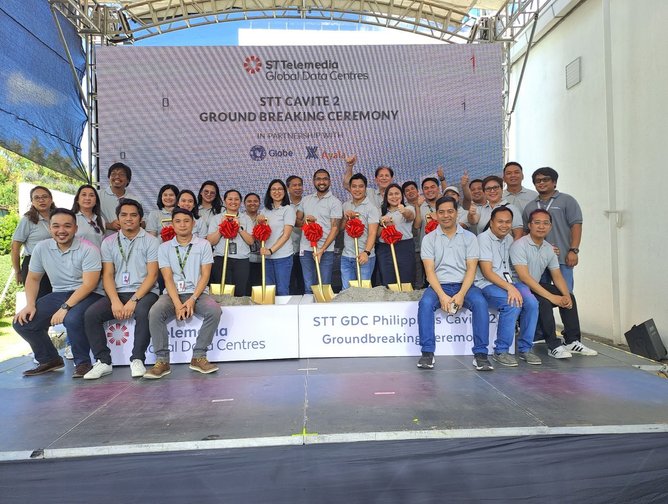STT GDC Enabling A Bright Digital Future for the Philippines
When it comes to the digital transformation opportunity in Southeast Asia, it seems the Philippines is on the cusp of something special.
Data centres are booming in the region, and growing connectivity via subsea cables to the United States means the Philippines could be the new gateway and data centre hub for this vibrant region.
There is strong domestic demand too, with the nation’s 118 million population spending more time online than any other in the Asia-Pacific region. According to recent data from Statista, the average Filipino spends a whopping 9 hours and 14 minutes per day using the internet, compared to 3 hours 45 minutes in Japan.
Such demand for digital services and internet connectivity is driving the development of data centres in the Philippines – and industry leader ST Telemedia Global Data Centres Philippines (STT GDC Philippines) is leading the way with expansion to seven data centres including a 124MW campus under construction.
Put into context, the nationwide data centre capacity is currently only around 60MW.
The Philippines’ Department of Information and Communications Technology (DICT) has said it expects that capacity to increase five-fold, to reach 300MW, by 2025.
With the Philippine digital industry set to grow at a projected CAGR of 20% through 2030, STT GDC Philippines’ President and CEO Carlo Malana says he is seeing “rapidly growing demand for high-quality co-location services in the Philippines as both cloud service providers and enterprises alike continually expand their business platforms to meet consumers’ evolving demand for low-latency digital services.”
So how is STT GDC Philippines aiming to deliver on that bold ambition, and why does it see the country as the next big opportunity for data centres in the region?
Malana explains how the company, which only formed in 2022, is embracing the challenge.
“It all happened quite fast, we were essentially a startup,” recalls Malana, when the company was first formed in a joint venture between one of the world’s fastest-growing data centre providers Globe Telecom, Singapore-based STT GDC, and conglomerate Ayala Corp.
“In 2023, we got real traction and set about changing the company. We started creating most of our capabilities in-house, adapting processes so we could make decisions faster and rapidly respond to customer demands.
“We created a framework where we were able to do things that were simply not possible in the old infrastructure. Some customers say we are doing what they thought was impossible, and so we've made that part of our DNA. We want to be a company that is trusted, easy to deal with, and can be banked on to deliver on the promises that we make.”
Just a year after the company was formed, STT GDC Philippines broke ground on the most interconnected, carrier-neutral data centre in the country. Not just that, but the STT Fairview data centre campus proved to be a step change.
“In a country where a 6MW data centre was once considered large, and most were around 2MW or 3MW, we came along announcing 124MW,” says Malana.
The STT Fairview data centre campus will be the largest, most interconnected, sustainable, and carrier-neutral DC in the country.
The Philippines is set to benefit from even greater connectivity thanks to additional subsea cables (the physical wires that make up the internet) connecting the country to the US west coast.
This is significant as it creates the physical infrastructure required to enable digital transformation across business and society.
With this increased connectivity and ramping up of data centre capacity, Malana shares the view of many experts who believe that the Philippines could become an alternative regional hub for hyperscalers looking to tackle concerns in traditional strongholds such as lack of space in Singapore or geopolitics in Hong Kong.
“With the investments that STT GDC Philippines is making, we aim to play a significant role in developing the nation’s digital future,” Malana says.
“Here we are building one data centre campus that is going to be twice the existing capacity of the entire country, because we want to make sure we have the scale. One of the key things for global cloud providers is that they want to see a runway – they want to see the ability to scale when they look at viable locations.
“So we provided strategic runways for both Fairview and Cavite, our two main campuses, and we also have three sites where not only can we fulfil their needs in the very near future – but also in the years to come.”
STT GDC Philippines began construction of a second facility in its STT Cavite data centre campus just six months after STT Fairview, which brings the total number of data centres operated by the company in the Philippines to seven.
Clearly, STT GDC Philippines is positioning itself for the future digital needs of the region, while also serving domestic demand. Malana says co-location is a further opportunity.
“STT GDC worldwide has already proven the ability to have a company focused on providing efficient, sustainable, reliable, secure data centres,” he says.
“Being able to work closely with technology companies from both China and the US is very important. We've established that reputation and aim to maintain the same standards that they are used to in Singapore, in the UK, and in India – in the Philippines as well. That's our goal.”
In any emerging market there are inevitable headwinds, and Malana identifies three possible hurdles for STT GDC Philippines to overcome. First, and probably the easiest to overcome in this instance, is the usual challenge associated with setting up and growing a new technology – encouraging widespread adoption. With clear demand, this should not be a problem.
Secondly, the increasing need to make data centres more sustainable, and develop assets that are future-proofed.
“The Philippines has quite a number of renewable energy projects that are due to open in the next couple of years,” says Malana. “Part of our strategy is to ensure that those power sources are available to our data centres because we have also committed to powering our data centres through renewable energy.”
The third factor Malana highlights is impossible to predict, but could also play into the Philippines’ favour – geopolitics. With tensions flaring in hotspots around the world, from Europe to the Middle East, having a centralised, politically neutral location is very attractive.
On top of these, Malana highlights global macroeconomic conditions (something every company can relate to), and tapping top talent (again, a universal concern).
Malana is confident though that these hurdles can be overcome and that STT GDC Philippines can help transform the Philippines into one of the major emerging data centre hubs, alongside established players like Singapore and Indonesia in Southeast Asia.
“In two to three years, we're looking to be able to service global cloud providers,” says Malana.
“At that point, we would have grown significantly. By 2025, we will be adding a notable amount of capacity, about 15MW, and then every year after that, we will add at least another 16MW – as long as the demand sustains it.
“So in three years from now, we're looking to triple our current capacity, which should be more than enough to service the needs of the global cloud providers.”
It is not just a case of building sufficient capacity. Malana says it is essential for STT GDC Philippines to mature, so the company is capable of handling the latest technologies and the demands of AI-based GPU processes – as well as being ready for direct liquid cooling.
The new data centre will have the ability to house liquid-cooled solutions and servers, offering a sustainability boost to those operating the tropics – by substantially reducing energy and water consumption.
He also sees the local talent base building to serve critical facilities and the wider digital infrastructure industry
“I think in three years we will be much more mature as an ecosystem and at that point I see the Philippines as being one of the major regional hubs,” he says.
Malana is clearly passionate about improving digital infrastructure in his home country, having spent more than 20 years in the US and Mexico before returning in late 2019 to work at Globe Telecom. While this move was in part driven by a desire to be closer to his family, he was also looking for an opportunity to make a difference in the future of the country he loves.
“I want to be able to make a difference in how the Philippines evolves in the future,” he says. “I am really proud that we have been able to accept the challenge of growing this company, with a very ambitious plan to execute, and be able to deliver what we promise.
“We're prepared for the challenges and confident that with this new and differentiated data centre capacity, we will be able to capture new demand while also helping our customers meet their own sustainability ambitions.”
Make sure you check out the latest edition of DataCentre Magazine and also sign up to our global conference series - Tech & AI LIVE 2024
**************
DataCentre Magazine is a BizClik brand





